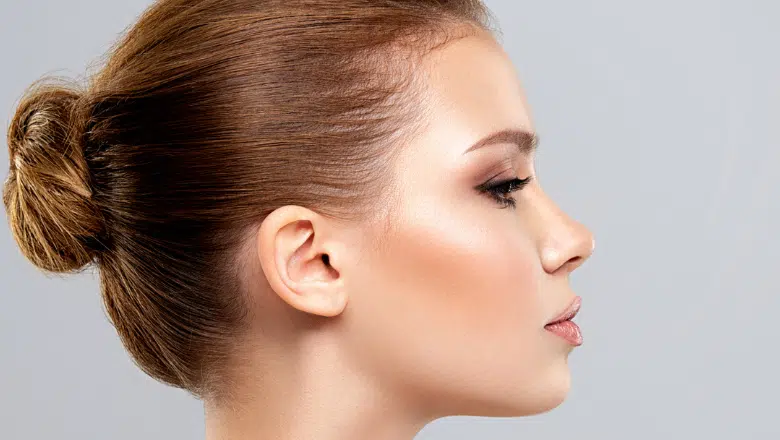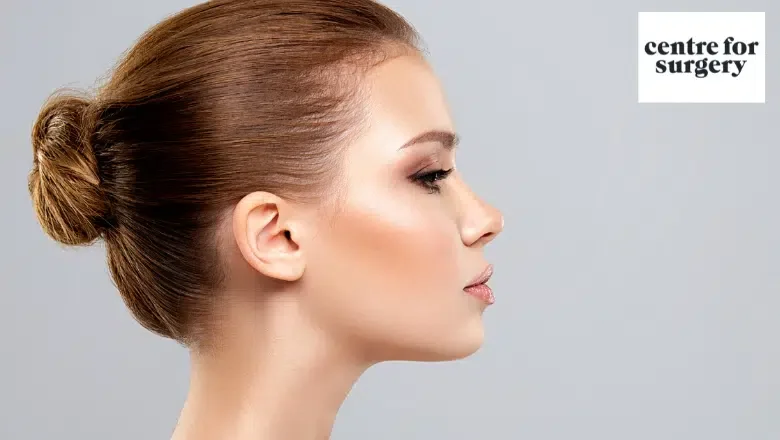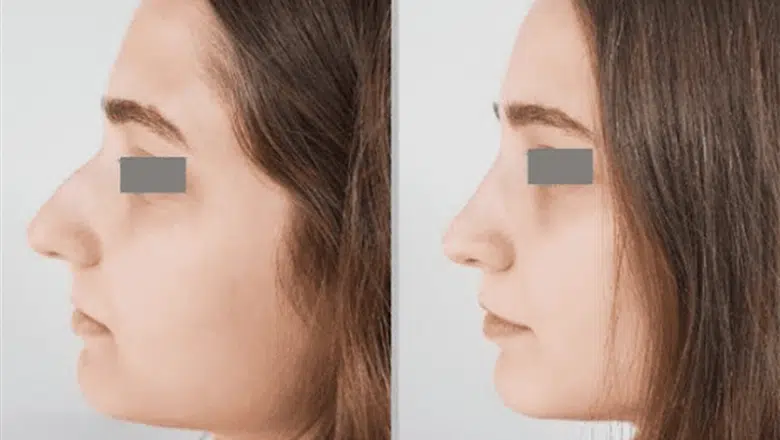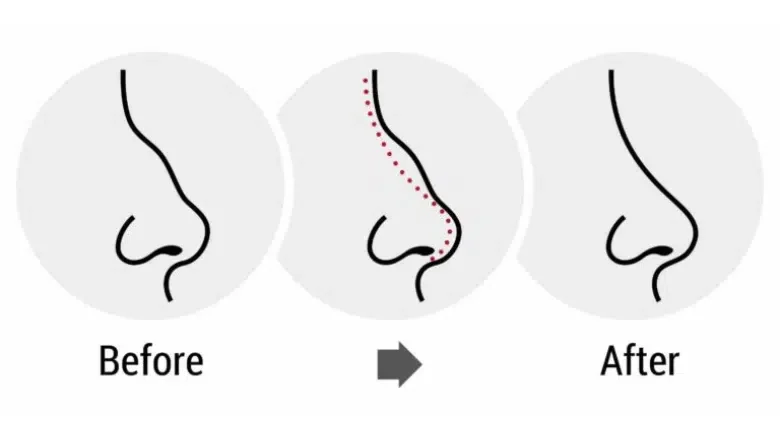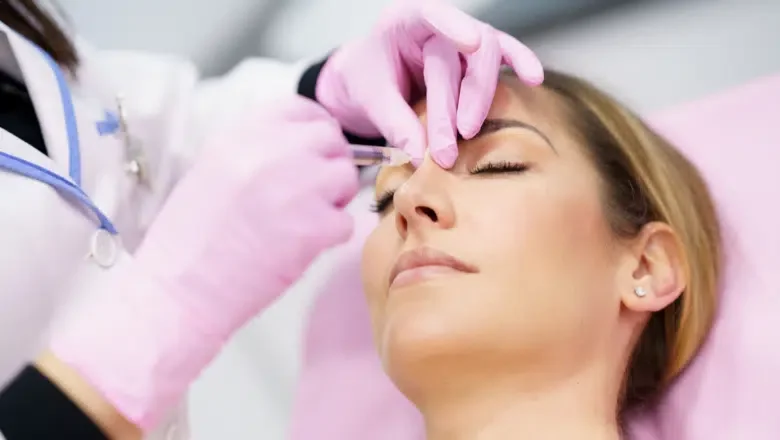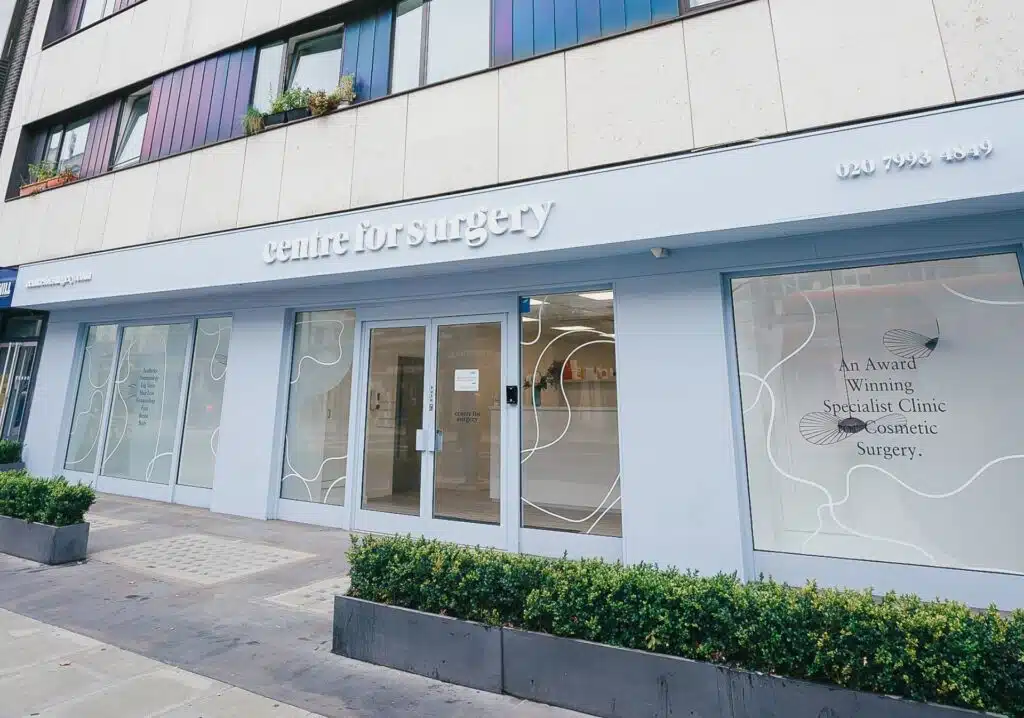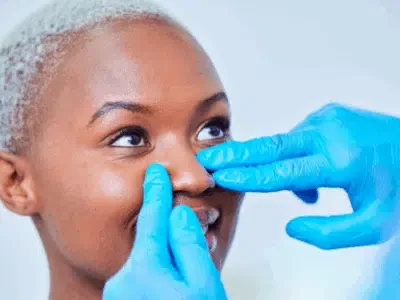How Can I Fix a Bumpy Nose?
If you’ve noticed a dorsal hump or a bump on your nose, you’re certainly not the only one. Many individuals have these bumps on their noses, which can arise due to various reasons. A dorsal bump typically presents itself as a small mound of bone or cartilage situated on the bridge of the nose. It’s commonly a hereditary feature passed down from parents to their offspring. Additionally, these nose bumps can also develop as a result of an injury or trauma inflicted on the nose.
When it comes to options for getting rid of this nose bump, there are several routes you could consider. One of these is to undergo a rhinoplasty surgery, which involves a surgical procedure designed to remove the bump. On the other hand, you could explore non-surgical methods, such as the use of dermal fillers. These are injectable substances used to add volume to areas of the face, and they can be employed to smooth out the appearance of a nose bump. A third option is to make use of makeup techniques to downplay the prominence of a crooked or high nose bridge.
Remember, each of these options has its pros and cons, so it’s crucial to discuss them with a medical professional to decide which route suits you best. This will ensure that your chosen method aligns with your aesthetic goals and overall health considerations.
RELATED: Nose Bridge Rhinoplasty
What is a Dorsal Hump?
A dorsal hump refers to an irregularity in the structure of the nose, involving both cartilage and bone. This feature, also commonly known as a nose bump, can range in size and isn’t typically visible from a head-on view. However, it becomes quite noticeable when you look at the profile of the person’s nose.
This hump usually starts at the upper region of the nose, near the eye area, and ends just before the tip of the nose. In many cases, individuals are born with dorsal humps, but sometimes these can develop later in life due to an injury or trauma that the nose has experienced.
On some occasions, you might notice a bump on the side of the nose bridge. This is essentially a form of dorsal hump but involves a bone that sticks out to the side. Contrasting with the typical dorsal hump, this particular condition can be more conspicuous when you look at the person from the front, as opposed to their side profile.
Regardless of how or why the dorsal hump has formed, a large number of people who have one tend to seek a smoother, flatter bridge for their nose. This preference is often driven by aesthetics, as a smooth nasal bridge is perceived to be more in harmony with other facial features.
RELATED: What Nose Shape Concerns Can Rhinoplasty Correct?
What Causes a Dorsal Hump Nose?
A dorsal hump, or a prominent bump on the bridge of the nose, can be caused by a variety of factors:
Injury or Trauma
A significant blow to the nose could lead to the development of a dorsal hump, as it can cause the cartilage in the nose to become misshapen. This is more common in children as their noses are still developing, and their cartilage is relatively soft. Depending on the severity of the trauma, the appearance of a dorsal hump resulting from an injury can often be corrected surgically.
Genetics
The most common cause of a dorsal hump is genetic predisposition. If one or both parents have a dorsal hump, the likelihood of their offspring having one is higher. It might not be visible during early childhood, but could become more prominent during puberty when the nose grows and develops further.
Medical Conditions
There are also several medical conditions that can lead to the development of a dorsal hump:
- Deviated Septum: This condition refers to the misalignment of the wall of cartilage that separates the nostrils. A deviated septum can lead to breathing difficulties and potentially the formation of a dorsal hump. A procedure known as septoplasty is often employed to correct a deviated septum.
- Allergies: Chronic allergies can lead to persistent swelling of nasal tissues, potentially causing a hump to form on the nose bridge.
- Nasal Polyps: These benign growths form on the nasal lining and can cause a hard bump on the nose. They are typically associated with allergies or other respiratory conditions.
- Boils: These are painful, pus-filled lumps caused by bacterial infections, often in a hair follicle. If a boil forms on the nose, it can potentially appear as a hump.
If the dorsal hump is a result of an underlying medical condition, treating that condition might help reduce its appearance. If the bumps on the bridge of the nose are painful or cause discomfort, it’s advisable to consult a plastic surgeon skilled in rhinoplasty surgery.
What is Dorsal Hump Nose Surgery?
The presence of a dorsal hump on the nose is a common concern that many seek to address for aesthetic or functional reasons. This issue can be effectively corrected through specialised nose reshaping procedures such as rhinoplasty or septoplasty.
RELATED: What Conditions Can Rhinoplasty Target?
Rhinoplasty
Rhinoplasty, commonly known as a nose job, involves the surgical reshaping of the nose’s bone or cartilage. This procedure is tailored to the individual’s needs, allowing for the reduction or augmentation of the nose’s size, altering its shape, and correcting other features like nostril width or prominent hooks. The technique used in rhinoplasty can be categorised into open or closed methods. Open rhinoplasty involves lifting the skin off the nose to provide comprehensive access to the underlying structure, whereas closed rhinoplasty is performed through incisions made within the nostrils, leaving no visible scars. The outcomes of rhinoplasty are highly individualised, influenced by the patient’s natural healing process and the specific characteristics of their nasal structure. Ensuring diligent aftercare and attending follow-up appointments are crucial for a smooth recovery and achieving the desired aesthetic result.
RELATED: Open vs Closed Rhinoplasty – Which is Best?
Septoplasty
Septoplasty targets the septum, the partition dividing the nasal cavity, to correct deviations that can lead to asymmetry and functional issues, such as impaired breathing or sleep apnoea. This procedure not only enhances the nose’s appearance but also improves nasal function. When a deviated septum accompanies a dorsal hump, septoplasty may be combined with rhinoplasty in a comprehensive approach known as septorhinoplasty. Typically, patients find the recovery from septoplasty to be quicker than rhinoplasty, with a return to everyday activities possible within a week, provided proper care is taken.
Both rhinoplasty and septoplasty are performed under general anaesthesia, emphasising the importance of seeking a consultation with a certified plastic surgeon. A professional assessment is essential to determine the most suitable surgical plan to address the dorsal hump and any associated structural concerns of the nose.
What Are the Benefits of Dorsal Hump Nose Surgery?
Dorsal hump nose surgery, known for its ability to refine the nose’s appearance and improve nasal function, offers a blend of aesthetic and functional benefits. This surgical procedure is sought after not only for its capacity to transform the nose’s shape but also for its potential to address and rectify breathing issues.
Aesthetic Enhancements through Surgery
The primary goal of dorsal hump removal is to create a more harmonious and balanced facial appearance by eliminating visible irregularities along the nasal bridge. This surgery meticulously sculpts the nose to achieve a smoother, more streamlined profile, enhancing the overall facial symmetry. Reducing the prominence of nasal bumps can significantly improve the nose’s alignment with other facial features, contributing to a more aesthetically pleasing facial contour. The impact of these changes goes beyond mere cosmetic improvement, as they can also bolster an individual’s self-esteem and confidence.
Functional Improvements for a Better Quality of Life
Beyond its aesthetic advantages, dorsal hump nose surgery addresses functional concerns that may affect an individual’s daily life. One of the key functional benefits includes the resolution of nasal blockages often associated with a pronounced dorsal hump. By correcting the structural issues causing these blockages, the surgery facilitates easier breathing and ensures an unobstructed airway. Furthermore, individuals suffering from sleep apnoea, a condition exacerbated by nasal obstructions, may find significant relief post-surgery. The removal of obstacles within the nasal passage can lead to a marked improvement in sleep quality and overall respiratory health.
The dual benefits of dorsal hump nose surgery make it a compelling option for those looking to address both cosmetic and functional nasal concerns. By offering a solution that encompasses aesthetic refinement and the enhancement of nasal functionality, this surgery stands out as a comprehensive approach to improving not only one’s appearance but also one’s quality of life. Whether seeking to enhance facial harmony or alleviate breathing difficulties, dorsal hump removal surgery presents a pathway to achieving these goals, underpinning the importance of consulting with a skilled surgeon to explore the full spectrum of benefits.
Dorsal Hump Removal Treatment Options
Dorsal hump removal typically involves rhinoplasty, a surgical procedure that reshapes the nose. The two primary types of rhinoplasty that can be used for dorsal hump removal are:
Open Rhinoplasty
This is the most common and generally the most effective technique for dorsal hump removal. During an open rhinoplasty, the surgeon makes an incision across the columella (the narrow strip of tissue that separates the nostrils). This gives the surgeon better access to the underlying structures of the nose. The surgeon can then remove or reshape the bone and cartilage, creating a smoother profile and reducing the appearance of the dorsal hump. The incision is closed with sutures, and the healing process begins.
Closed Rhinoplasty
This technique involves making incisions inside the nostrils, eliminating visible scarring. However, it offers less visibility and access to the nasal structures than open rhinoplasty, and may not be as effective for significant reshaping tasks like dorsal hump removal. Despite this, in some cases where the hump is not overly pronounced, a closed rhinoplasty may be sufficient.
Your surgeon will help you determine which technique is best for your particular needs and goals. It’s crucial to have a thorough consultation to discuss your expectations, potential risks, and the recovery process.
Recovery after Dorsal Hump Surgery
Recovery after a dorsal hump surgery is a process that requires patience and care. You’ve outlined the general timeframe and expectations well, but here are a few additional details:
Pain management
Although there can be some discomfort in the first few days following surgery, your surgeon will likely provide pain medication to help manage this.
Activity limitations
For at least the first week following surgery, avoiding any activities that could cause a bump or injury to your nose is crucial. This includes strenuous activities and exercise. Also, be mindful when changing clothes or taking showers to prevent accidentally hitting your nose.
Diet
A diet rich in proteins and vitamins (like vitamins A and C) is recommended to enhance the healing process. Staying hydrated is also crucial.
Sleeping position
You’ll need to sleep with your head elevated to minimize swelling.
Postoperative care
You’ll be provided with post-operative care instructions which may include how to care for the surgical site, medications to take or apply to aid healing and reduce the potential for infection, and when to follow up with your surgeon.
Emotional recovery
Patients may initially experience some emotional ups and downs after the procedure, which is entirely normal. If you experience persistent feelings of sadness or dissatisfaction with the results, you should discuss these feelings with your surgeon or a mental health professional.
Remember, everyone’s recovery time is unique, and it may take up to a year to see the final result of the surgery. It’s essential to have patience and keep open communication with your surgeon throughout the recovery process.
What Are the Non-Invasive Dorsal Hump Nose Treatments?
If the dorsal hump on your nose is relatively small, you might have the option of using nose fillers to make it less apparent. This method is a non-surgical cosmetic procedure in which a substance similar to gel is injected into the nose to even out any bumps or irregularities. This treatment is sometimes called non-surgical rhinoplasty or a ‘liquid nose job’.
Dermal fillers can smooth the surface of your nose, thereby making the dorsal hump less noticeable. However, it’s important to understand that this isn’t a permanent solution. The fillers will need to be injected again every few months to maintain the results. While this treatment doesn’t actually remove the dorsal hump, it can effectively minimise its appearance and make it less prominent.
Q&A on Dorsal Hump Removal
Can a Dorsal Hump Affect My Breathing?
Yes, a dorsal hump can indeed influence your breathing. This condition can lead to airway obstruction or chronic sinus issues, which can cause nasal congestion and sleep apnoea. The severity of the impact on breathing varies depending on the size and position of the hump. If you’re experiencing breathing difficulties, it’s essential to consult with an ear, nose, and throat (ENT) specialist. A thorough evaluation will help determine the extent to which the dorsal hump is affecting your breathing and what treatment options are available to alleviate the problem.
Why Is My Nose Bridge Painful?
Pain in the nose bridge can arise from several causes, including trauma, inflammation, or structural issues within the nose itself. A direct injury to the nose can result in a fracture or a deviation of the septum, leading to pain, swelling, and discomfort in the nasal bridge area. Additionally, sinus inflammation can trigger pain and a feeling of pressure around the nose bridge, often accompanied by congestion and, in more severe cases, headaches. Another potential cause of pain in this area could be nasal polyps, benign growths that can lead to discomfort and breathing difficulties. If you’re experiencing persistent pain in your nose bridge, it’s advisable to seek medical attention to identify the underlying cause and receive appropriate treatment.
How Long Does Recovery from Dorsal Hump Nose Surgery Take?
Recovery from dorsal hump nose surgery, or rhinoplasty, typically spans between 6 to 12 weeks. However, the exact duration can vary widely among individuals, influenced by factors such as personal healing capabilities, pre-existing health conditions, and adherence to post-operative care instructions. In the initial days following the surgery, experiencing swelling and bruising around the nose and eyes is quite common. Despite these immediate after-effects, many patients find they are able to resume their normal daily activities within the first couple of weeks, provided they manage their recovery with care.
To facilitate a smooth and efficient healing process, it’s crucial for patients to attend all scheduled follow-up appointments. These sessions allow the surgeon to monitor the healing progress and address any concerns that may arise. Adhering to a regimen of gentle care, avoiding vigorous activities, and following the surgeon’s post-operative instructions diligently are key steps to promote optimal healing. Engaging in a regular skincare routine also plays a significant role in reducing inflammation and swelling, ultimately contributing to a more refined and aesthetically pleasing outcome.
What Are the Risks Associated with Dorsal Hump Nose Surgery?
Like all surgical interventions, dorsal hump nose surgery comes with its share of potential risks, though complications are relatively rare when a skilled and experienced surgeon performs the procedure. Common concerns include infection at the surgical site, reactions to anaesthesia, significant bleeding, and the possibility of scarring. Additionally, some patients might experience breathing difficulties or develop septal perforation, a condition where a hole forms in the nasal septum.
RELATED: Breathing Better: How Septoplasty and Turbinate Reduction Can Help
To minimise these risks, it’s essential for patients to undergo a thorough pre-operative assessment. This enables the surgeon to tailor the surgical plan to the individual’s specific needs and health profile, thereby reducing the likelihood of complications. Patients are encouraged to openly discuss any apprehensions or questions with their surgeon both before and after the procedure. This open line of communication is vital for ensuring a safe surgery and fostering a swift recovery.
Can a Dorsal Hump Disappear Naturally?
Unfortunately, a dorsal hump will not disappear on its own. While age-related changes in the cartilage structure of the nose might slightly reduce the prominence of a dorsal hump, expecting it to vanish entirely without surgical or non-surgical intervention is unrealistic. The shape and structure of the nasal cartilage are relatively stable, and significant changes without medical procedures are rare. If the appearance of a dorsal hump is a concern, consulting with a plastic surgeon can provide options for cosmetic improvement.
How to get rid of a dorsal hump?
For a long-lasting and noticeable change, surgery is the most effective way to get rid of a dorsal hump. This is the only method that can permanently remove the hump and reshape the nose to achieve the desired look.
However, if the dorsal hump is small, there’s the option of using dermal fillers to minimise its appearance. It’s important to be aware that this isn’t a permanent solution. The treatment will need to be repeated every few months to maintain the result.
Booking a Consultation at Centre for Surgery
We are dedicated to providing you with the highest level of care and attention, ensuring your needs and concerns are addressed in a professional and respectful manner.
Whether you’re considering a surgical or non-surgical treatment, the first step is to book a consultation with us. During this meeting, you’ll have the opportunity to discuss your concerns and goals, learn about the available treatment options, and ask any questions you might have.
Our team of highly qualified and experienced plastic and ENT surgeons will assess your situation, advise you on the most appropriate course of action, and work with you to develop a personalised treatment plan. They have the skills, knowledge, and expertise to ensure you feel comfortable and confident with your decision.
To book a consultation, fill out our online form, or you can call us directly on 0207 993 4849. Our friendly patient coordinator team will be delighted to assist you in arranging your appointment. We’re looking forward to meeting you and helping you on your journey to improved confidence and self-esteem.
